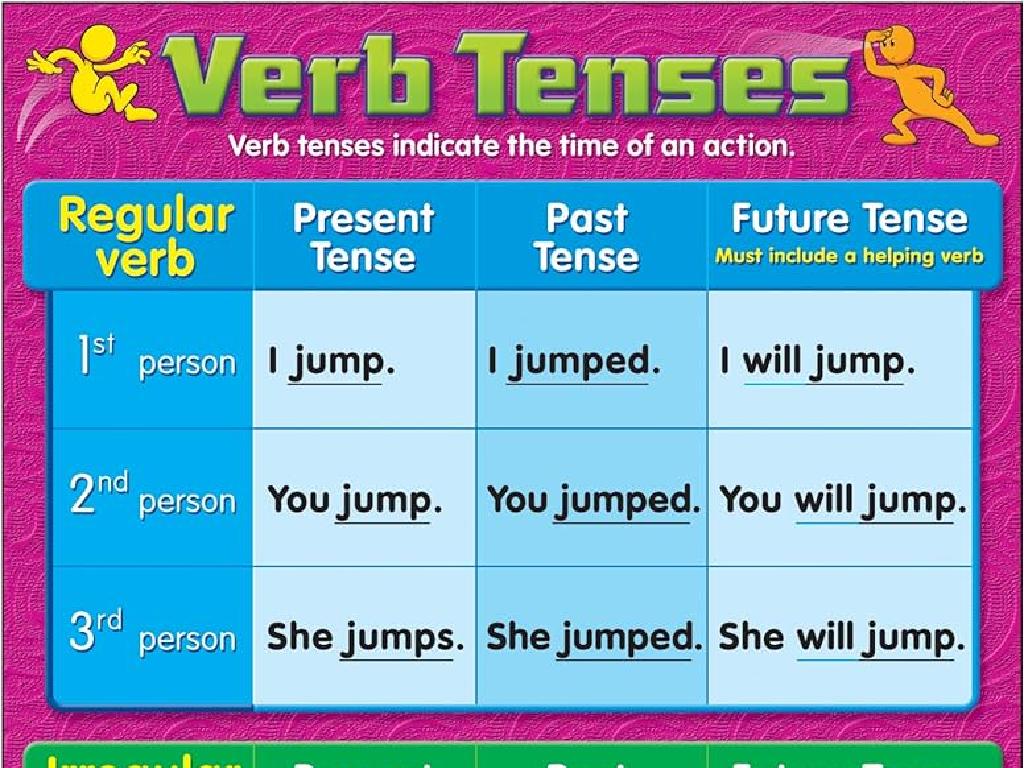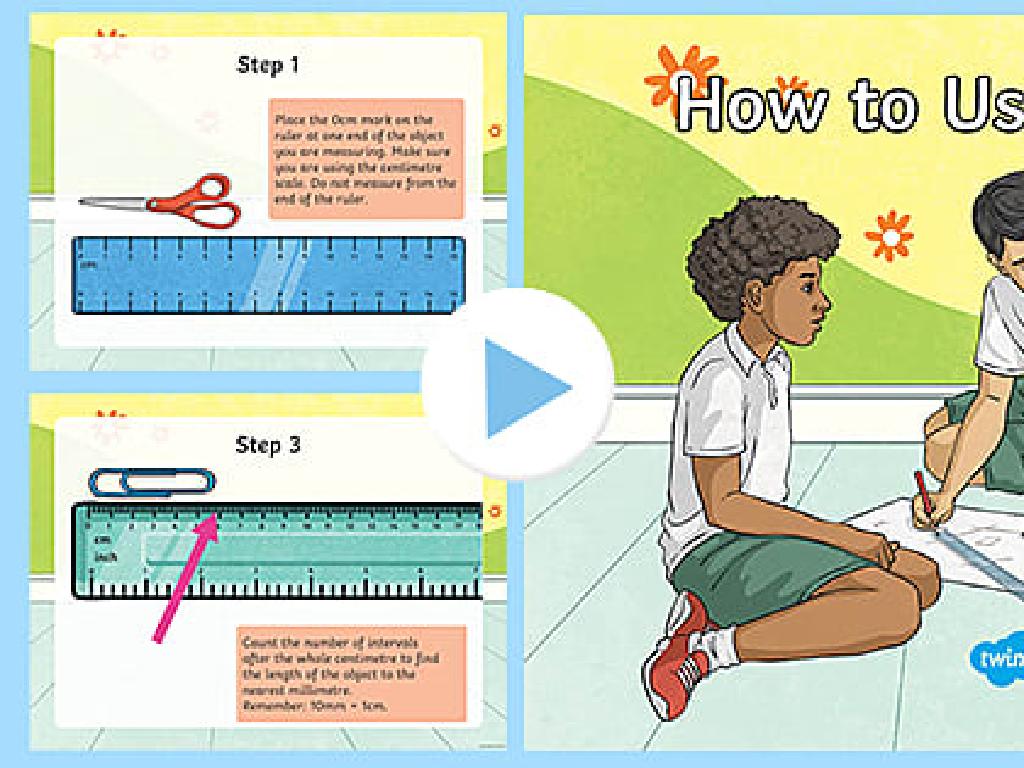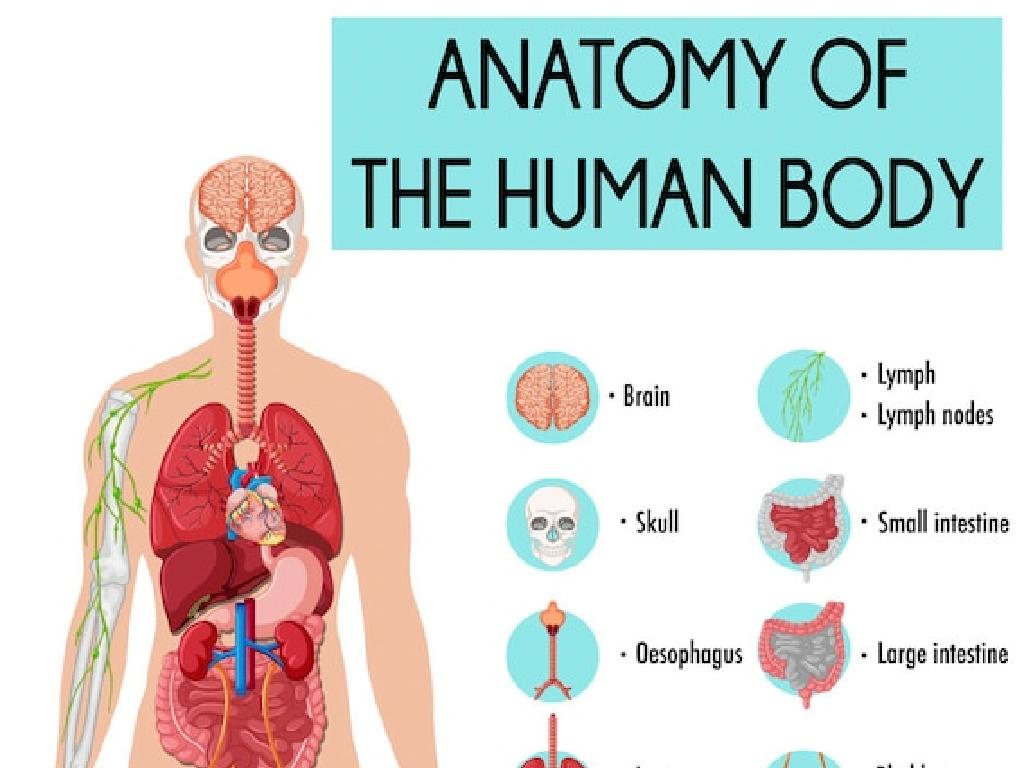Compare Fractions With Like Numerators Or Denominators
Subject: Math
Grade: Fourth grade
Topic: Compare And Order Fractions
Please LOG IN to download the presentation. Access is available to registered users only.
View More Content
Today’s Adventure: Comparing Fractions!
– Fractions represent parts of a whole
– Like numerators: same top number
– If fractions have the same numerator, the one with the smaller denominator is larger because the whole is divided into fewer pieces.
– Like denominators: same bottom number
– If fractions have the same denominator, the one with the larger numerator is larger because it has more pieces of the same size.
– How to compare fractions with like numbers
– Use greater than, less than, or equal to symbols to compare fractions with like numerators or denominators.
|
Begin the lesson by explaining that fractions are a way to represent parts of a whole, making sure students understand the concepts of numerator and denominator. Introduce the terms ‘like numerators’ and ‘like denominators’ and explain that they are fractions with the same top number (numerator) or the same bottom number (denominator), respectively. Teach students how to compare fractions with like numerators or denominators by considering the size of the parts. For like numerators, the fraction with the smaller denominator represents larger parts, thus is the larger fraction. For like denominators, the fraction with the larger numerator has more parts, making it larger. Encourage students to practice by using comparison symbols and provide examples for them to work through.
Understanding Fractions
– A fraction is part of a whole
– Numerator: the top number
– Tells how many parts we have
– Denominator: the bottom number
– Tells how many parts in total
– Examples: 1/2, 3/4, 5/8
– Pieces of a pizza: 1/2 means half a pizza, 3/4 means three quarters of a pizza
|
Begin the lesson by explaining that a fraction represents a part of a whole, like a slice of pizza. The numerator, which is the top number of the fraction, indicates how many parts we are considering, while the denominator, the bottom number, shows the total number of equal parts the whole is divided into. Use everyday examples such as slices of pizza to illustrate fractions in a relatable way. For instance, if a pizza is cut into 8 equal slices and we have 5 slices, we can represent this as the fraction 5/8. Encourage students to think of other examples of fractions they encounter in daily life.
Comparing Fractions with Like Numerators
– Understanding like numerators
– Fractions with the same numerator, such as 1/3, 1/4, 1/5
– Example fractions with like numerators
– 1/3, 1/4, 1/5 all have a numerator of 1
– Comparing fractions with like numerators
– Look at the denominators to decide which is larger or smaller
– Smaller denominators mean larger fractions
– In 1/3, 1/4, 1/5, 1/3 is the largest because 3 is the smallest denominator
|
This slide introduces the concept of like numerators to fourth-grade students. Begin by explaining that fractions with the same top number, or numerator, are considered to have like numerators. Provide examples such as 1/3, 1/4, and 1/5 to illustrate this point. Teach students that to compare fractions with like numerators, they need to examine the denominators the larger the denominator, the smaller the fraction’s value. Conversely, the smaller the denominator, the larger the fraction’s value. This is because the same amount (the numerator) is being divided into more pieces (the denominator), making each piece smaller. Encourage students to practice with additional examples and to visualize the concept by drawing pictures or using fraction strips.
Comparing Fractions with Like Denominators
– What are like denominators?
– Fractions that have the same bottom number, the denominator
– Example fractions with like denominators
– Consider 2/5, 3/5, 4/5 – they all have 5 as the denominator
– Determining the largest fraction
– The larger the top number (numerator), the larger the fraction
– Practice comparing fractions
|
This slide introduces students to the concept of like denominators, which is when fractions have the same bottom number. Use the examples provided to illustrate how fractions with like denominators are compared. Emphasize that when fractions have the same denominator, the fraction with the larger numerator is the larger fraction. For instance, in the fractions 2/5, 3/5, and 4/5, 4/5 is the largest because 4 is the largest numerator. Encourage students to practice with additional examples and to explain their reasoning when determining which fraction is larger. This will help solidify their understanding of comparing fractions with like denominators.
Comparing Fractions with Like Numerators
– Rule for like numerators
– When numerators are the same, check denominators
– Larger denominators mean smaller fractions
– Remember: Bigger bottom number, smaller the piece
– Example: 1/3 vs 1/4
– Since 3 is less than 4, 1/3 is larger than 1/4
– Practice time with examples!
|
This slide introduces the concept of comparing fractions with the same numerators. Emphasize that when fractions have the same top number (numerator), the size of the fraction is inversely related to the bottom number (denominator). Use visual aids like pie charts or fraction bars if possible to illustrate that a larger denominator means the whole is divided into more pieces, making each piece smaller. During practice, provide students with pairs of fractions to compare and ask them to explain their reasoning. This will help solidify their understanding of the concept.
Comparing Fractions with Like Denominators
– Rule for like denominators
– Fractions with the same bottom number (denominator) are easy to compare.
– Larger numerator means larger fraction
– If two fractions have the same denominator, just look at the top number (numerator) to tell which is bigger.
– Example: 3/5 vs 2/5
– Since 3 is more than 2, 3/5 is bigger than 2/5.
– Let’s compare more fractions!
|
This slide introduces the concept of comparing fractions with like denominators. Emphasize that when fractions have the same denominator, the comparison comes down to looking at the numerators. The larger the numerator, the larger the fraction. Use the example provided to illustrate this point. Then, engage the class with additional examples, asking them to compare fractions with like denominators. This will help solidify their understanding through practice. Encourage students to explain their reasoning for each comparison to reinforce the concept.
Let’s Practice Comparing Fractions!
– Compare 1/3 to 1/5
– 1/3 has fewer pieces, so each piece is bigger than 1/5
– Which is smaller: 2/7 or 3/7?
– 2/7 has fewer pieces than 3/7, so it’s smaller
– Order fractions: 1/6, 1/4, 1/3
– Smallest to largest: 1/6, 1/4, 1/3
|
This slide is a class activity designed to help students practice comparing fractions with like numerators. Start by explaining that when fractions have the same numerator, the fraction with the larger denominator is actually smaller because the whole is divided into more pieces. For the second question, guide students to see that with the same denominator, the fraction with the smaller numerator is smaller. Finally, have students apply these concepts to order the given fractions from smallest to largest. Encourage students to draw pictures or use fraction strips if they need a visual aid to compare the sizes. Possible activities include using manipulatives, drawing fractions, or creating a classroom number line to place fractions correctly.
Class Activity: Fraction Scavenger Hunt
– Find divisible classroom objects
– Compare object fractions with peers
– Which object parts are bigger or smaller?
– Present larger or smaller fractions
– Use like numerators or denominators to compare
– Reflect on fraction comparison
|
This interactive activity is designed to help students understand fractions by finding real-life examples in the classroom. Students will search for objects that can be divided into parts, such as a set of books or a group of pencils, and then compare the fractions representing parts of these objects. Encourage them to discuss their findings with classmates to determine which fractions are larger or smaller, focusing on those with like numerators or denominators. Possible activities: 1) Comparing window panes, 2) Dividing a pack of markers, 3) Segmenting a paper into parts, 4) Grouping erasers. This will help them visualize and better grasp the concept of comparing fractions.
Conclusion & Homework: Fraction Fun!
– Excellent work on fractions!
– Homework: Find fractions at home
– Look for fractions in everyday items like pizza slices or fruit pieces
– Compare your fractions
– Use what you’ve learned to determine which is larger or smaller
– Share your findings tomorrow
|
Today’s lesson focused on comparing fractions with like numerators or denominators. For homework, students are encouraged to apply this knowledge in a real-world context by finding and comparing fractions in their home environment. This could involve comparing the number of slices of pizza left in two different boxes or pieces of different fruits cut into fractions. Encourage students to think critically about the size of the fractions and to use the strategies learned in class to compare them. Remind them to be prepared to discuss their comparisons in class the next day. This exercise will help reinforce their understanding and give them a practical application of the concept.





